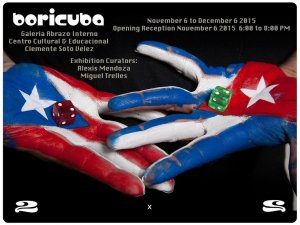 BxArts Factory presents BORI-CUBA 2×2 Art Exhibition at
BxArts Factory presents BORI-CUBA 2×2 Art Exhibition at
Clemente Soto Vélez Cultural & Educational Center
November 6th to December 6th 2015
107 Suffolk Street, New York
Artists:
Alejandro Epifanio, Alicia Leal, Annex Burgos, Carlos Mateu, Clara Morera, Diogenes Ballester, Elizam Escobar, Frank Guiller, Ibrahim Miranda, Ivelisse Jimenez, Jesus Rivera, Josue Guarionex Colon-Rosado, Juan Fernando Morales, Juan Si Gonzalez, Juana Valdes, Juanita Lanzo, Lissette Solorzano, Luis Stephenberg, MarcosDimas, Maria Dominguez, Nelson Alvarez, Nestor Otero, Nitza Tufino, Rafael Velez, Raul Villarreal, Renelio Marin
BORI-CUBA 2X2 seeks to provide an overview of how visual artists in two contemporary Caribbean cultures, Cuba and Puerto Rico, address the continuous dialogue between island and diaspora. For different reasons, a sizable sector of both islands’ populations has become diasporic, and the ongoing dialogue between both sectors has come to define their identities. It has been repeatedly said that both islands are “wings of the same bird” or mirror images of each other. To begin with, they share a strong Taino strand in their pre-Columbian history and a common Spanish colonial heritage. Both islands were, in fact, the last remnants of the Spanish empire in the Americas and were administratively treated in much the same way. The two islands’ culture was also shaped by a strong African presence and both have acted as ciphers of geopolitical brinksmanship since colonial days. Around the mid 20th century, this situation was reinforced by the relationship each island developed with the United States during the Cold War, with each one assuming a diametrically opposite relationship to its northern neighbor. Cuban visual culture, both that of the Island and that of the Diaspora, has had an overt political tone according to its pro or anti Cuban Revolution stance, reflected in its pro or anti U.S. position. The visual culture of Puerto Rico, on the other hand, has frequently displayed a covert political undertone, frequently addressing its colonial relationship to the United States. Are contemporary Cuban and Puerto Rican artists aware of this common tradition or are they distancing themselves from those concerns? Given the no less contrasting situation of the latest U.S. attitudes toward both islands (while there is a definite rapprochement with Cuba, there seems to be a great indifference toward helping solve Puerto Rico’s fiscal crisis), it is certainly pertinent to study whether those attitudes are being addressed in the current art production of both countries, both by the artists who live on the islands and those who are part of their diasporas.
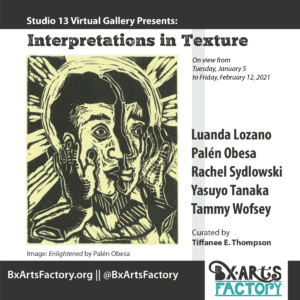
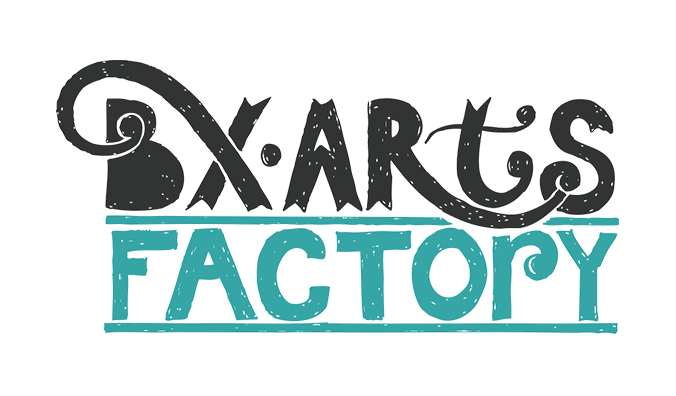
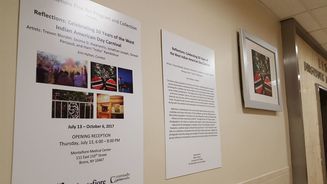 As a life-long Bronx resident I was elated and proud to have curated an exhibition that celebrates my West Indian heritage. With the support of BXArts Factory and hosted by the Montefiore Fine Arts program ArtViews gallery, the exhibition was on view July 13, 2017 – Oct 6, 2017 at Montefiore Moses Campus, 90 East 210th St. Bronx, NY 10467.
As a life-long Bronx resident I was elated and proud to have curated an exhibition that celebrates my West Indian heritage. With the support of BXArts Factory and hosted by the Montefiore Fine Arts program ArtViews gallery, the exhibition was on view July 13, 2017 – Oct 6, 2017 at Montefiore Moses Campus, 90 East 210th St. Bronx, NY 10467. Saturday, March 26
Saturday, March 26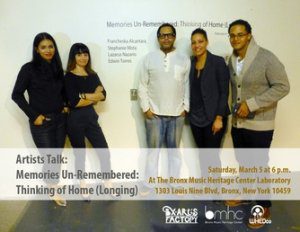 Saturday from 6 p.m. to 7:30 p.m.
Saturday from 6 p.m. to 7:30 p.m.
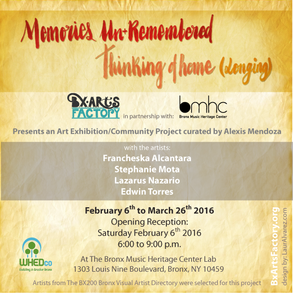
 BxArts Factory presents BORI-CUBA 2×2 Art Exhibition at
BxArts Factory presents BORI-CUBA 2×2 Art Exhibition at